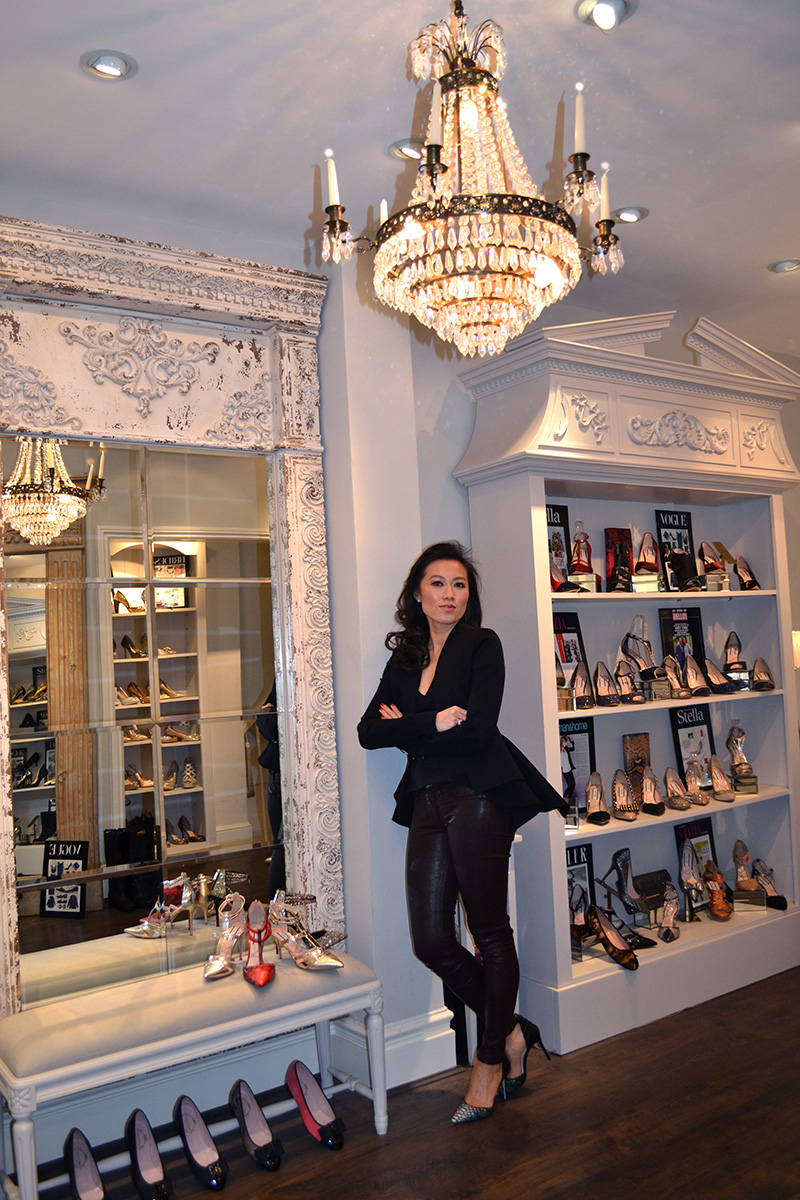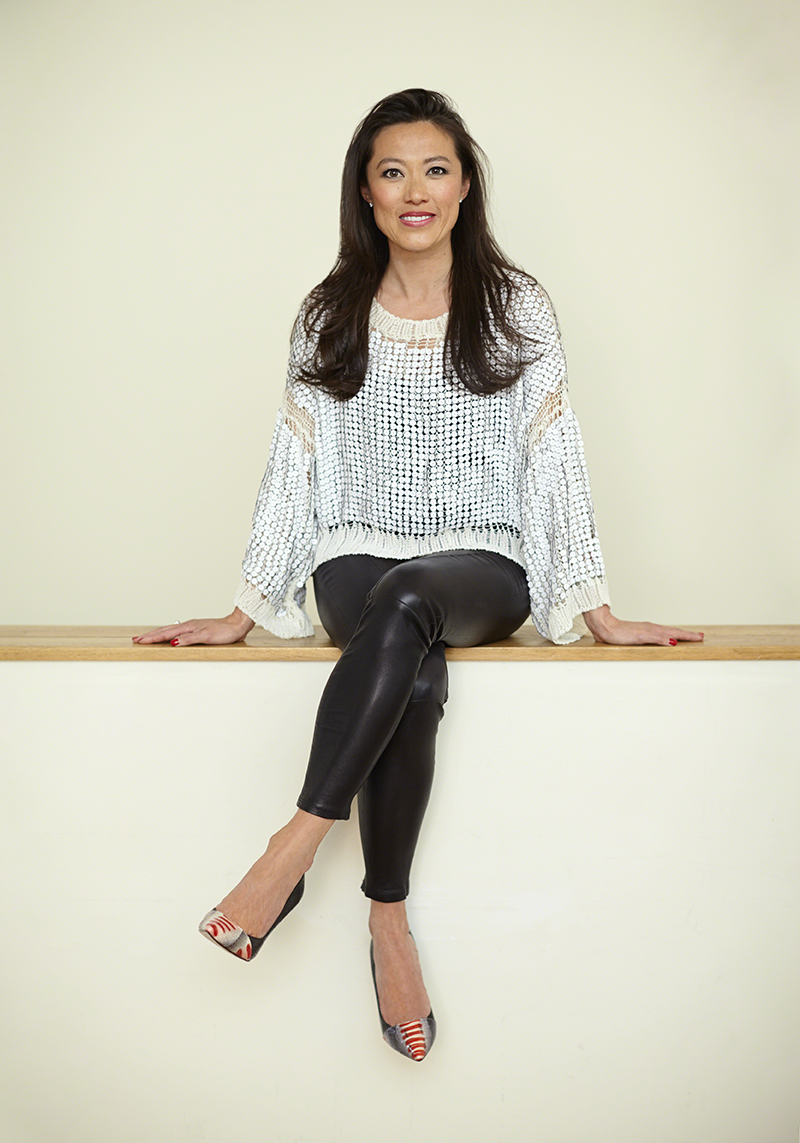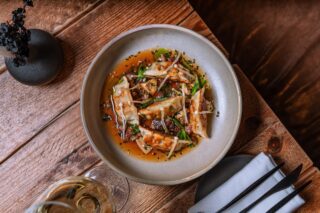This website uses cookies so that we can provide you with the best user experience possible. Cookie information is stored in your browser and performs functions such as recognising you when you return to our website and helping our team to understand which sections of the website you find most interesting and useful.
Shoe designer Lucy Choi talks rock and royalty with her new collection and why she didn’t go into the family business
By Michelle Johnson | 19 September 2018 | Culture, Lifestyle, Style
Lucy Choi London’s AW18 collection is inspired by London’s luxury hotels such as the Bulgari, Goring and Claridge’s

Shoe designer Lucy Choi has a unique approach to identifying the needs of her customers. The niece of famed haute shoemaker Jimmy Choo says that every modern British woman is a blend of two Kates – edgy and iconic model Kate Moss and the elegant and always on point Duchess of Cambridge, née Kate Middleton. With that in mind, each of her colourful, sought-after designs has a mixture of those dual personalities. Need to go from the board room to the after party? Lucy Choi London aims to delight.
Choi has gone a step further in her new AW18 collection, taking inspiration from the landmark London venues where royalty and society mix. Named after venues from Claridge's to the Ned, Soho House to Chiltern Firehouse and royal favourite The Goring, each shoe aims to bring a slice of the capital to your soles.
The designer launched her brand in 2012 after nearly 25 years in the shoe industry and in the City, and quickly became a favourite of the likes of models Winnie Harlow and Alessandra Ambrosio, and former ballerina Darcey Bussell. In addition to her London flagship store, Choi's brand is now sold in more than 80 UK stockists as well as internationally. Here, she takes Tempus through her new collection, her rock and royalty style, and why she chose not to work with her Uncle Jimmy.
Lucy, tell us about your AW18 collection?
I always feel that shoe designers often play it too safe, worry about not being able to sell a show if it's too colourful or daring. But for me, designing shoes is about being creative, and express my brand. My shoes are one of a kind, and very different to what other brands are doing – and I get the same feeling from the venues that have inspired this collection. It's very much about going back to that very British, traditional style and bringing out those bold colours that are usually missing from a collection.
Why did you choose 'the two Kates' as your inspiration? What inspires you about the combination of rock and royalty?
When I started the brand in 2012 I thought, who would be my dream clients? Obviously, it was Kate Moss and Kate Middleton, but their style is very different. But in a way I think that difference in style represents most women – some of us need to go to work and look sharp and elegant, some of us need to be on the cutting edge of style to do business but still pair that with a suit. And then there are times we want to look funky, throw on a pair of leather trousers and be Kate Moss. We all have those two people inside us, but you can reflect a bit of both of them in one shoe – for example my Claridges deisgn is a very classic pump but the clashing textures and materials are really funky. >>
Related: Artist Nassia Inglessis celebrates creative disobedience at the London Design Biennale

You're well known for that clash of material and colour, which you don't often see in shoe design.
I feel your shoes are the final touch of an outfit. Very often our clothes are really stylish, so we think we need to be classic and plain in our footwear, but that's not the case. I always wear black and navy, but I love mixing materials – velvet, satin, leather. My shoes are the same – I like my shoes to stand out. The perfect shoes can make you feel confident and happy. The key is that they're comfortable, well-crafted and have character
Did your uncle, Jimmy Choo, influence you?
I learned a lot from him. I used to watch him making shoes for catwalks, for Princess Diana, so I've learned a lot from him. He's very humble, and taught me values, especially in terms of delivering what you promise – if you're promising that your shoes are comfortable they have to be comfortable, and that lies in the quality of how you make them. So I just felt very lucky to have him as my uncle, I couldn't have learnt from a better source.
I used to watch my sister designing when she worked with Jimmy, but I wanted to make sure I learned about the business side of things, the whole 360˚, and create my own business. I think Jimmy was quite shocked at that, why would I work for someone else when I had it all right in front of me? But after university I delighted I didn't want to go into the family business for Jimmy Choo, but I saw how he built his business and I wanted to do it differently. We just don't talk money or business when we're all together! >>
Related: Secrets of the runway: Tempus meets Gucci model Jack Chambers

You launched Lucy Choi London during the economic recession and it's flourished over the six years since. What was your thinking behind launching it at that time?
I worked in the industry for 10 years, and before that worked in the City, so I had nearly 25 years of business experience under my belt. I was determined to know the industry inside and out before launching my own business. There's no better time to launch that during recession. Sometimes when things are negative you can move it into the positive, and I saw a gap in the market that I could fill perfectly. It was actually amazing timing.
What advice would you give entrepreneurs?
Know your market. You need to know what you're doing. It took me 10 years of experience before I started my company, and having the expertise and experience has allowed me to weather the storm if bad times come through. I used to be in financial planning, forecasting, accountancy in a blue-chip company, which was tough. Then I moved into fashion, which is tough in different ways. You have to know the right people to know the industry, so it takes time to build those relationships. Then, you have to identify your audience, you customer demographic, and know who you are as a brand. What are you providing? I have that at the back of my mind whenever I design a style.
How is the footwear industry changing?
think in the past the industry was very male dominated, but it's definitely changing. We've got people like Tabitha Simmons, Charlotte Olympia, Sophia Webster, which is changing the landscape of footwear. It's so important to have women at the helm and see female designer coming out and dominating the show industry, showing their creative vision and changing the face of footwear. I also hope it means we'll be seeing a trend in much more comfortable, adaptable shoes – after all, how would a guy know whether a heel is comfortable or not?







